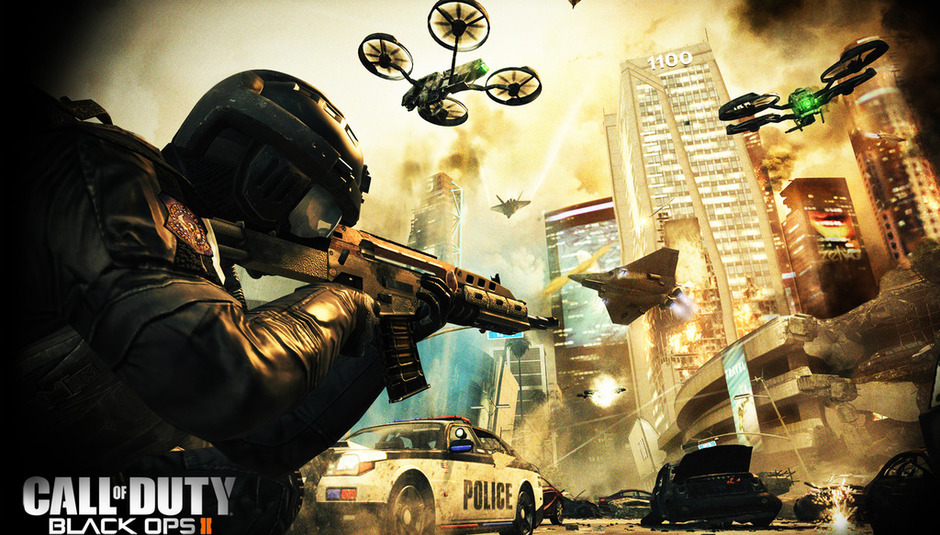Such has been my anticipation for a few upcoming early 2013 releases, notably Bioshock Infinite and the Western localisation of Ni No Kuni, that I was at risk of failing to take stock of what a great year for games 2012 has been. But, taking ten to look over what’s hit consoles, mobiles, tablets and desktops alike, it’s evident that there’s been rich pickings for discerning gamers over the past 12 months.
But before I shine a spotlight on some of the year’s best, how’s about one of the year’s biggest…
Now Playing
(The review bit)
Call of Duty: Black Ops II enjoyed, officially, the biggest game launch of all time. The sequel to 2010’s first entry in the CoD splinter series made a record-breaking $500m within 24 hours on sale. That the previous record was held by another CoD title, 2011’s Modern Warfare 3, suggests that developer Treyarch is doing something very, very right.
But has this come at the expense of progress? From the perspective of the non-gamer, the two biggest video game launches of all time have been for titles where the objective, basically, is to shoot a whole bunch of people, using a whole bunch of weapons, across a variety of great-looking but ultimately interchangeable environments. (Okay, that airport level was genuinely something.)
Black Ops II’s media campaign features amazing-looking trailers full of futuristic flight-suits, dramatic skydives and explosive set pieces. But this is, mostly, window dressing – the meat and vegetables remain as they were in the FPS genre 20 years ago: get gun, aim gun, shoot gun. Repeat ‘til the credits role. Enemies burn. Enemies get blown up. Enemies have their throats hacked at. This is tremendously violent entertainment for a video-gaming mainstream perhaps worryingly ambivalent towards such high-definition on-screen brutality.
But this isn’t the place for another are-games-too-violent debate. Black Ops II exists in a commercial world where strapping a pair of guns to your mostly invisible protagonist’s body and going after a Big Bad via as many of their minions as possible is a staple gaming genre. Perhaps it was Doom that started it; perhaps it goes back further than that (read last month’s FPS special). How we got to the here and now isn’t important. What is: Treyarch have tapped into a widespread breed of gamer’s lusts and loves and, with incredible success, produced titles that flick all of their necessary switches. Which, inevitably, are linked to some brand of explosive or other.
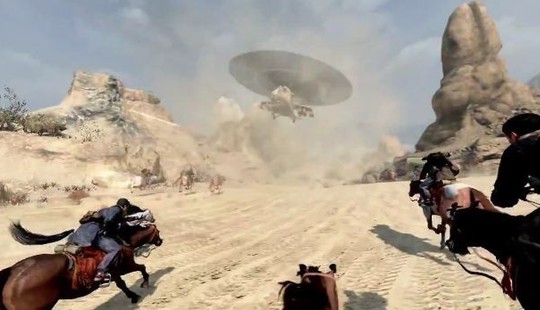 Black Ops 2: horses vs helicopter... but it's the tanks you should worry about
Black Ops 2: horses vs helicopter... but it's the tanks you should worry about
For the most part, then, Black Ops II sticks to what the series does best. Weapons change – whatever the situation, using a Massive Rocket Launcher to bring down a Massive Guns-Blazing Helicopter, is always going to be fun – but the archaic gameplay remains, whether it’s in near-future Burma or Afghanistan in the 80s. Treyarch slip some massive moments into their rudimentary FPS construct, flashes of brilliance that fans of the CoD series have come to expect and its doubters rarely highlight. The term blockbuster springs to mind as easily here as it would with regard to another Die Hard movie (although it’s very easy to die in Black Ops II).
Futuristic weapons and unmanned combat mechs and drones lend a sci-fi edge to proceedings, and the entwined fates of certain characters will make for compelling stuff to those who’ve battled through previous CoD campaigns. A real effort has been made to break up the generic FPS gameplay, too. Strike Force Missions are real-time strategy asides, the fallout from which (i.e. if the missions end in success or failure) alter the campaign’s plot. They’re not the easiest sections to navigate, but at least they’re different. A brief cameo as the game’s primary antagonist Raul Menendez almost represents pathos amongst the flurries of armour-piercing bullets – though whether your tears are of laughter or empathy, only you will know.
With David Goyer (The Dark Knight) on script duties, and the likes of Michael Keaton and Sam Worthington amongst the cast, Black Ops II’s campaign is a stronger proposition than before, but it’s nowhere near as emotionally engaging as another of 2012’s military shooters, Spec Ops: The Line. Ultimately, it’s hard to care too much about these gruff-voiced grunts if you've not met them before now, the faceless Master Chief proving a more sympathetic protagonist in Halo 4’s campaign than the sweating-and-cursing soldiers found here.
And like Halo 4, many come to Black Ops II for its multiplayer options. Not being fond of online competition myself – I like to see the eyes of my victims, mwah ha ha – I can only go on the facts. Which are that Treyarch has pushed the proverbial boat out, revising several aspects of the CoD multiplayer experience. That’s what it says on Wikipedia, anyway. Also present is a Zombies mode, for those that’d rather unload on the undead than some foreign terrorist sorts. It’s a bit difficult, with ammo scarce and zombies plentiful. The hardcore will lap it up like so much brain matter; more casual sorts will see it as added-value content to dip in and out of when the game’s ‘reality’ begins to bite.
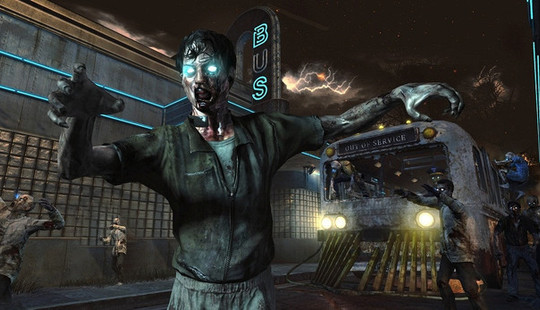 Black Ops 2: careful aiming is essential in Zombie mode, or it's game over
Black Ops 2: careful aiming is essential in Zombie mode, or it's game over
Black Ops II’s biggest triumph – its unflinching depictions of the horrors war, be it in the recent past or the speculative near future, brings on people, places, relationships and legacies – is also its greatest failure. This is not the game to turn those previously unmoved by the CoD series into supporters of Treyarch’s cause. Gaming can be a great escape, shelter from the tremendous savagery of the everyday, as seen on our 24-hour news screens and the covers of free ‘papers littering the rail networks. Sometimes all one wants is to dive into another world so very far removed from real life.
Which brings me to a pair of cartoon escapades: Epic Mickey 2: The Power of Two and Family Guy: Back to the Multiverse. The former is the sequel to 2010’s original Epic Mickey, a game which matched wonderful art design with awkward controls and a camera that regularly misbehaved – and, sadly, it’s not fully resolved the issues that plagued said predecessor.
Playing in local co-op, the 3D platformer’s vertically split screen doesn’t allow the player to really get to grips with their surroundings; and it’s easy to lose track of Mickey’s partner for this caper, Oswald the Rabbit, even when they’re in the hands of another person sat right next to you. Playing solo presents different problems: Oswald won’t always respond immediately to Mickey’s demands to zap a switch with his multi-purpose remote control, essential for opening new areas of each stage or activating progress-enabling machinery.
The context-sensitive A button (playing on a 360) is a pain, too – it serves as the jump command, unless Mickey stands before a door, or a pulley, or something else he has to grab onto. Inevitably, this poor button layout means that, frequently, instead of holding onto a bucket of essential fireworks, Mickey leaps into the air, wasting what might be precious seconds. And the camera, while improved, still asks the player to make the occasional leap into the unknown. At least the restarts are swift, and failing to jump (or fly, using Oswald’s bunny ears) over a chasm doesn’t actually mean game over.
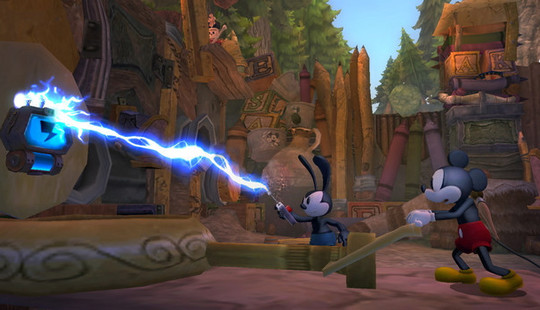 Epic Mickey 2: When Oswald does as he's told, you can actually get somewhere...
Epic Mickey 2: When Oswald does as he's told, you can actually get somewhere...
Mickey’s paintbrush ‘weapon’, used to fill and thin environments and enemies alike, is one of modern gaming’s greatest USPs, and it’s always a joy to play around with. Mickey can use it to befriend enemies and turn them against their (former) buddies; make walls vanish to open up secret, collectables-rich areas (and there are loads of collectibles to be found, and classic Disney cartoons, including 1929’s The Skeleton Dance, can be unlocked); and build up or shrink down platform sections to allow for easier passage. It’s a problem-solver, a trouble maker, and this game’s greatest asset. Mickey and Oswald can also coat themselves in invisible and indelible ink to access hard-to-reach areas.
The game’s sort-of-open-world structure has its drawbacks though. Mickey (and Oswald) progress via 2D sections connecting the main, 3D ones; and via projectors spread around the place. But it’s easy (well, I found it easy) to get lost, to take a wrong turn – and at one point it took me an hour to return to the path marked progress, jumping between levels until I found the right projector. There are also times when the gremlin (Gus) accompanying the pair on their quest, whose role is simply to point you in the right direction, vanishes – again, at one point I was wandering a level, poking in corners until an exit projector presented itself. There is a map – but its place on the pause menu rather than the on-screen HUD renders it fairly useless.
The plot is messy, and will only really connect with those who played the first Epic Mickey. And the game’s musical numbers, led by the Mad Doctor, are forgettable by Disney standards. Yet… something about The Power of Two compels this player to keep on with it. Its cutesy yet dark art style – gloom pervades many a level – is wonderful, and Mickey Mouse has a fine track record in video gaming: few gamers of my age (early 30s) won’t have fond memories of Castle of Illusion. It’s imperfect, yet loveable in a way, like a wayward cousin often up to mischief but blessed with a heart of gold. Underneath its myriad faults, you know there’s a charming game here.
Back to the Multiverse is imperfect, too – and that’s being kind to the latest video game spin-off from the Family Guy franchise. Playing as both Stewie the baby and Brian the dog, the objective is to stop the evil Bertram from destroying the known universe. And this is achieved through… shooting, anything and everything, basically. Until the level in question ends.
 Family Guy: A bit like Robot Chicken, only, not...
Family Guy: A bit like Robot Chicken, only, not...
Alarming difficulty spikes – two bosses, one a tank and one a dinosaur (with lasers and rockets on its head, naturally), prove particularly frustrating – are indicative of a poorly realised end product. It attempts to temper its repetitive gameplay (and sampled quips… If I hear “This is my rifle / This is my gun…” one more time I’ll strangle a midget whether they’ve gin or not) with varied level aesthetics, many of which are pleasant to look at, capturing the Family Guy look perfectly.
But whether our protagonists are in space fighting through an odd mash-up of Aliens and Chicken Run, throwing up on the Seven Seas as a Pirate Peter fires cannonballs at their faces, stuck in an evil alternative Quahog where nuclear missiles come loaded with angry kittens, or infiltrating a North Pole stronghold to overthrow a weapons-dealing Santa, the gameplay refuses to budge out of second gear. Run, aim, shoot, repeat. Pick up some health and some ammo. Listen to a terrible joke for the 800th time. And just how is Man’s Best Friend so handy with a sniper rifle, anyway?
Reviews picking up on Back to the Multiverse’s unashamed tastelessness – in what other game can you kill Santa? – are either by writers unaware of the show’s divisive humour, or terrible prudes indeed. The extremity of the gags wouldn’t matter if they were actually funny, as the show can be at times.
But this game misses every punch line, drops every fine set-up into a sinkhole of depravity. It has to be funny for its ludicrous plot to work, and that it misfires consistently is its undoing. The gameplay is most reminiscent of another animation adaptation, The Simpsons Game of 2007. But where that felt like an extended episode with worthwhile references and a cavalcade of snappy observations, Back to the Multiverse trades exclusively on smut. Not big. Certainly not clever. And one for only the most avid Family Guy fan.
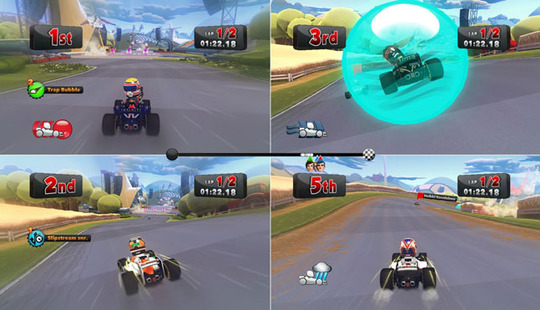 F1 Race Stars: rather more fun when played with friends
F1 Race Stars: rather more fun when played with friends
Rather more family friendly is F1 Race Stars, a (sort of) karting game that takes the official Formula One license already put to good use by developer Codemasters on its tie-in simulation series and spins out a Mario Kart wannabe. It’s a little rough about its edges to play – constantly pitting to repair damage is a chore, especially when the objective is to damage your fellow racers; and the various power-ups aren’t all that powerful – but its bubbly presentation and colourful cartoonish versions of the titular F1 race stars will engage effortlessly with younger audiences.
There are various solo-play modes, but F1 Race Stars is a game you’ll only really want to fire up when you’ve mates over. And even then, when you’ve an N64 sat next to your 360 (as I have), soon enough a certain rotund plumber’s going to be called into action. Codemasters deserve credit though for doing more with a desirable license than just churn out iteration after iteration of the same F1 game. F1 Race Stars is far from perfect, but it’ll plaster a smile on your face for the short term.
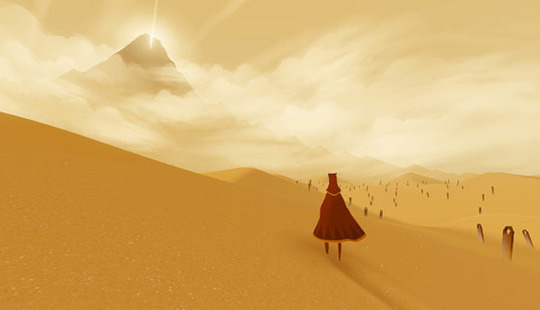
Still Playing
(The best games of 2012)
Super Hexagon
(iOS; developed by Terry Cavanagh)
Until my iPad was unceremoniously smashed recently, this is pretty much all that I used it for. A beautifully simple-to-grasp game, Super Hexagon challenges the player to navigate a tiny triangle through an evolving maze of obstacles. Basically, don’t smash your little thingy into the spinning walls. But while it’s easy enough to pick up – there are just two controls, rotate left and rotate right – mastering Super Hexagon will take many weeks. And given that an average game of it might last anywhere between a couple of seconds and, if you’re really good, a couple of minutes, in that time you’ll restart hundreds if not thousands of times. It’s a mini masterpiece, a pocket-sized marvel, and perhaps the most perfectly engineered game of 2012.
Punch Quest
(iOS; developed by RocketCat)
The greatest free app of 2012 until it wasn’t, Punch Quest is the fantastic love child of Jetpack Joyride and Ghouls’n Ghosts, a gothic brawl-‘em-up auto-runner where the timing of an uppercut can mean life (for a little longer, anyway) or near instant death. Brilliantly received, with 9/10 scores from Pocket Gamer and IGN, the game’s been downloaded over half a million times. Which would be great for RocketCat – if only more than next to nobody had bought some of its in-game currency. The solution? The developer is now charging for Punch Quest, but the tiny fee of 69p is well worth paying for some awesomely addictive arcade-y action, where beating your own high score becomes a daily must.
Mass Effect 3
(Windows, 360, PS3; developed by BioWare)
Don’t get too hung up on the ending and how it did, or didn’t, satisfy the demands of those who’d sunk upwards of 100 hours into this trilogy. Instead, reflect on one of the finest RPGs of a generation, where mistakes present on previous entries had been corrected and refinements introduced in such a way that it felt like they’d always been there. Mass Effect 3 was a spectacular final chapter, bringing together narrative threads that’d been left loose at the end of 2, adding real gravitas to the overall plot as Earth itself is steadily torched, and finally making a martyr out of one of the series’ primary characters… Assuming you let that happen, of course.
Dragon’s Dogma
(PS3, 360; developed by Capcom)
Another great (action) RPG of 2012, but one that might have passed a few would-be fans by. While Dragon’s Dogma’s on-paper breakdown amounts to a series of genre conventions tied together, playing the game reveals an immersive, unique experience. Environmentally its vast open world is a ringer for Oblivion, and the severe difficulty spikes (if you explore an area too soon) are reminiscent of Dark Souls, but this is very much its own game, leaving its own lasting impressions. And the individual gamer is very much the architect of their own adventure – quests are rarely straightforward, with branching routes both physical and narrative, and how one sets up their party of ‘pawns’ greatly improves or worsens their prospects depending on the challenges afoot. If Skyrim wowed you in 2011, this could do the trick today. A sequel, supposedly in the works, would certainly be welcomed.
XCOM: Enemy Unknown
(Windows, PS3, 360; developed by Firaxis Games)
Turn-based games aren’t for everybody, but everybody should be willing to give this revival of the X-COM franchise a go. Charged with the command of an Extraterrestrial Combat Unit, the player must defend against invading alien forces set, inevitably, on overthrowing us humans. As enemy units are conquered and their technology reverse-engineered to benefit mankind, so the game’s plot progresses – but be prepared for disaster. As great as Firaxis’ game is, it can lead the player to a brick wall of impassable difficulty, as enemy types develop at a pace that your own weapon production can’t match. Play the game on its Ironman setting and these encounters mean it’s back to square one and the deployment of a new base of operations, as there are no second chances. Absorbing stuff, captivating enough to have one overlooking the occasional glitch in the field, like being able to shoot someone through a wall from an impossible angle…
Dishonored
(Windows, PS3, 360; developed by Arkane Studios)
Offering proof that expansive open worlds are no necessity when it comes to crafting wholly engrossing first-person-perspective titles, Dishonored’s lean and largely linear level design made the most of Arkane’s spectacularly realised setting of Dunwall. It’s rare that a game’s location is its standout star, but this city – a blend of Victorian London, Edinburgh and other murky, post-industrial revolution settlements – is as alive as any of the colourful characters inhabiting it. Dunwall changes as the player, as Corvo Attano, progresses through the game using extreme violence or stealth and non-lethal actions – the more carnage left in his wake, so citizens become more obviously affected by a plague, spread by an ever-growing rat population. What looked like an appealing but limited hybrid of Assassin’s Creed and BioShock at the preview stage turned out to be one of the most exciting new IPs of 2012. Just don’t expect it to last too long.
Journey
(PS3; developed by Thatgamecompany)
Words? Where we’re going, we don’t need words…
Sleeping Dogs
(Windows, 360, PS3; developed by Square Enix, United Front Games)
Grand Theft Auto: Hong Kong proved to be so much more than that. Sleeping Dogs’ constituents might have been cribbed from preceding games and movies – its exploration lifted from the 3D GTA games, its plot borrowed from Infernal Affairs, its combat based on Rocksteady Studios’ Batman titles – and it certainly wasn’t the prettiest, glitch-free sandbox game released in 2012. But the whole here is rather more than the sum of its parts – and Sleeping Dogs is the first third-person game of its kind to leave a lasting impression with me since Red Dead Redemption. Much, much better than it perhaps had any right to be, especially given its terribly protracted development period.
The Walking Dead
(iOS, 360, Windows, PS3, OS X; developed by Telltale Games)
Its point-and-click interface was like many other Telltale episodic releases – check out their Back to the Future and Monkey Island games. But The Walking Dead bore itself deeper into the heart of the player than, perhaps, any game of comparable ilk before it. Across its five chapters – released between April and November 2012 – story is king, and frequently brutal as primary protagonist Lee Everett encounters fellow survivors in varying states of mental decline while forever trying to avoid the attentions of the zombie-like walkers. It’s an emotionally demanding experience, albeit one that you often feel you’re watching rather than actually playing.
Street Fighter x Tekken
(Windows, 360, PS3, Vita, iOS; developed by Capcom, Dimps)
Because sometimes all you want to do is punch something. And punching something is rarely more fun than when the game in question has the words Street and Fighter in its title. Just don’t pay any attention to the solo-player plot. Really, don’t. It’ll melt your brain. What the hell is that mammoth doing there? Brilliant looking and possessing many weeks’ worth of special-moves-learning value-for-money given its epic cast (the Tekken crew look great, too), Street Fighter x Tekken is my pick of 2012’s beat-‘em-ups.
NEXT MONTH: As it becomes a teenager in 2013, Savage Pixels celebrates the PlayStation 2 by selecting ten perfect games for the most successful home console of all time. So why not suggest some solid-gold classics for the PS2 below...

